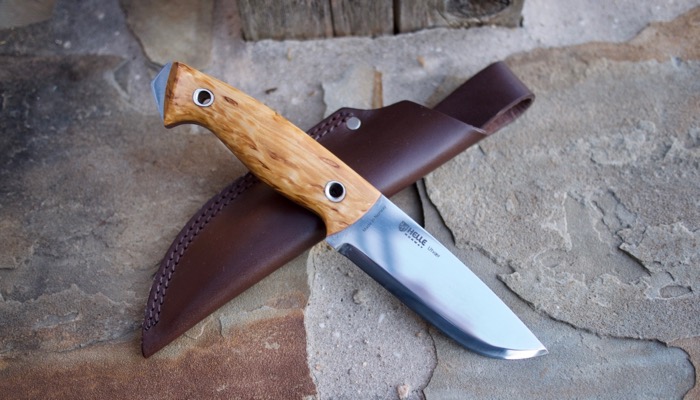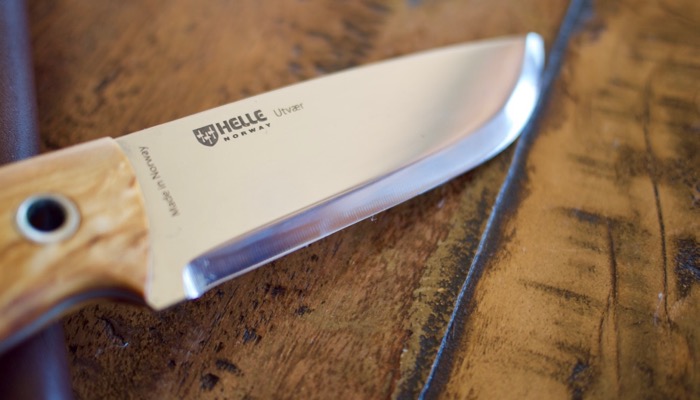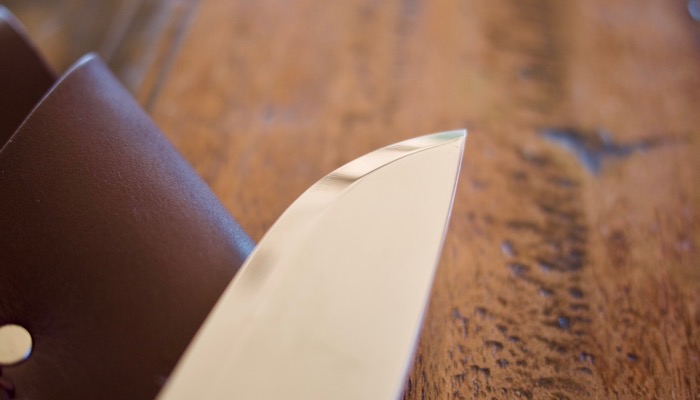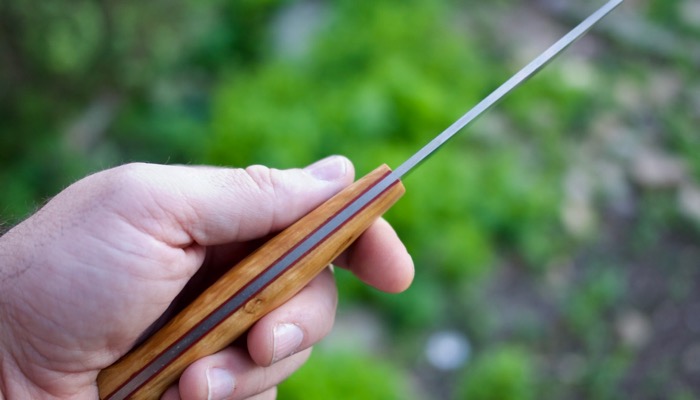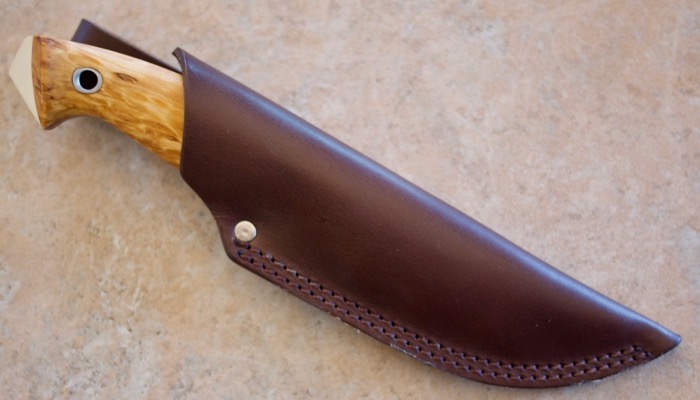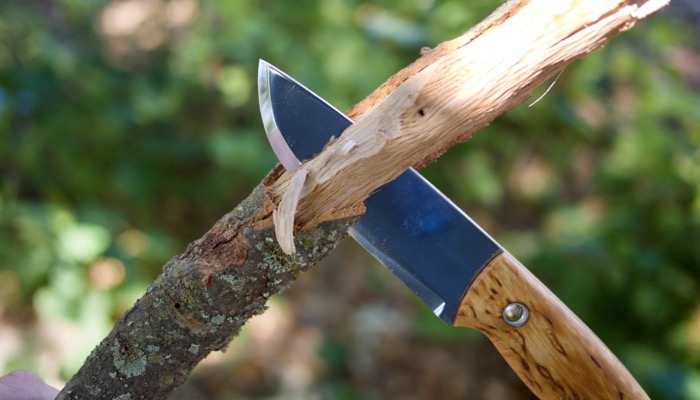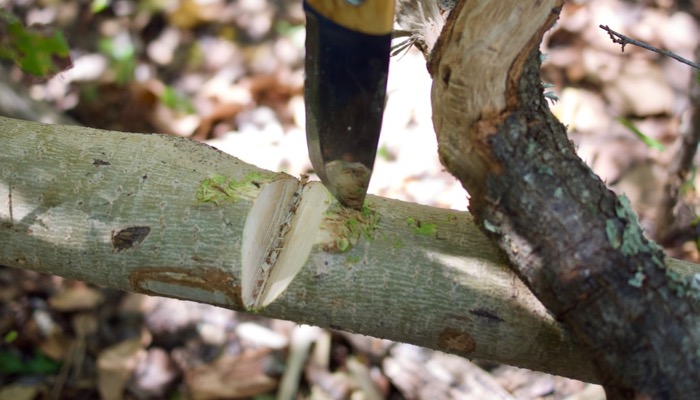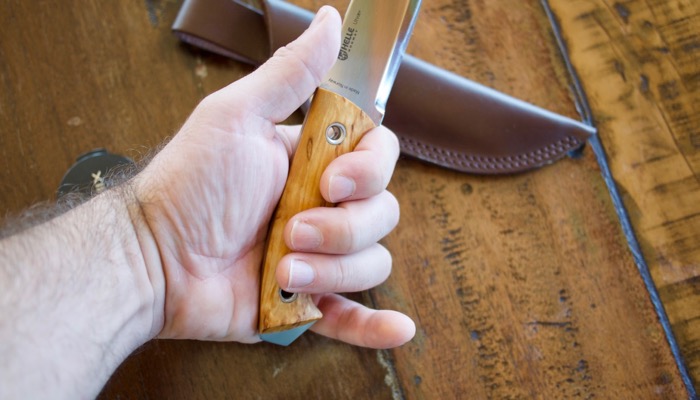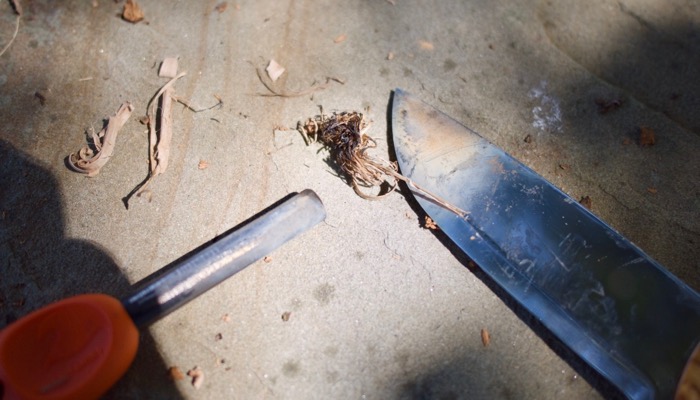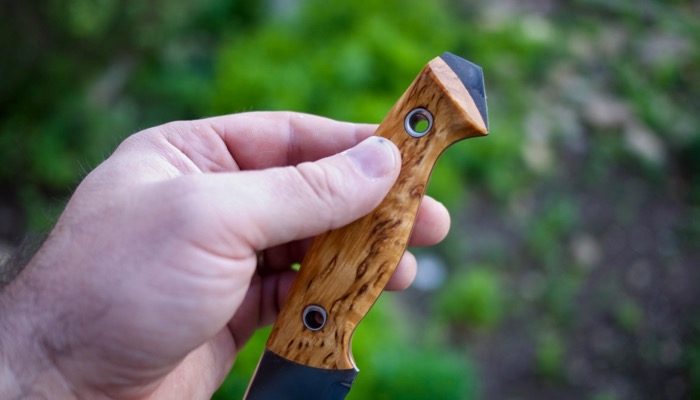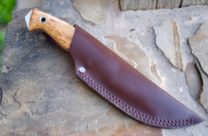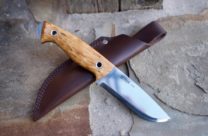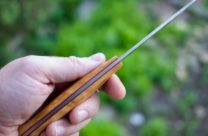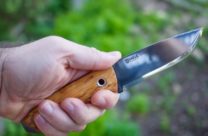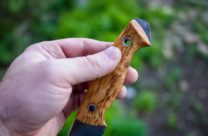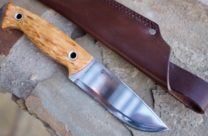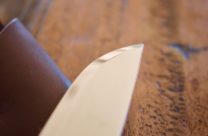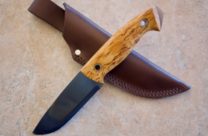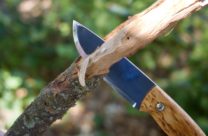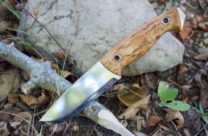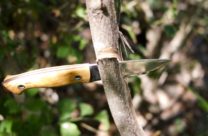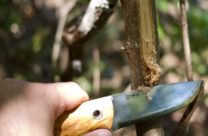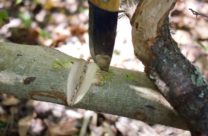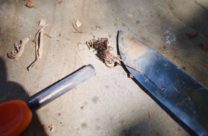Helle of Norway is best known for traditional Scandinavian-style bushcraft knives, but the Helle Utvaer is an attempt to offer a more American-centric, “tactical” knife design while still keeping finished product fundamentally Scandinavian in build and functionality.
The result is a gorgeous design by Danish knifemaker Jesper Voxnaes that, as the only full-tang knife in Helle’s catalog, can stand up to more abuse than the standard Scandi offering. But does it go far enough towards the “survival” end of the spectrum to make it into our field knife guide?
In this first look at the Utvaer, I’ll cover the specs, features, and my overall initial impressions from some light use. I’m working on a test lab for repeatable tests on knives, so the next installment will feature the results of that testing.
Helle was brave enough to provide us with a review sample, knowing full well that we don’t hold back when evaluating products. As always, our Prepared Promise means we evaluate products without bias or bribe.
Specs:
- Blade: 4″
- Overall length: 8″
- Thickness: 3mm
- Handle: Birch
- Steel: Sandvik 12C27 (laminated stainless)
- Weight: 5oz, or 6.75oz with sheath
- Price: $225 USD
Summary
Here is a quick breakdown of the pros and cons of the Utvaer, as I see them so far:
Pros:
- Stunningly sharp, and seems to hold an edge well
- Full-tang
- Birch handle is gorgeous
- Red handle liners are a nice touch
- Versatile blade shape
- Leather sheath is top-notch
- Lightweight
- Easy to unsheath and re-sheath
- Both the spine and pommel are sharp enough to use with a ferro rod
Cons:
- Price is way too high, and probably needs to come down by at least 40% if they want to compete in the American market.
- Laminated stainless blade seems way too thin for the “anything goes” type use and abuse that’s likely in a true survival scenario. But perhaps the testing will reveal otherwise.
- Handle is just too small
- Pommel wedge doesn’t seem to have much utility, at least in my initial field use.
- Grind marks on the blade, & other very minor finish issues
Ergonomics and design
The tip grind on the Utvaer is nicely symmetrical — this small detail is easy to screw up, especially on a Scandi grind, but Helle gets it right. However, the grind does shrink towards the tip, and I’m not sure if this is intentional. In any case, it’s perfectly symmetrical so it doesn’t affect function.
The spine of the blade is flat, and sharp enough on its own to do some light carving or throw a spark from a firesteel. I had no problems using a Light My Fire Swedish Firesteel to spark some tinder.
The Scandi edge grind is mirror polished, thin, and razor sharp, but there are grind marks and polishing imperfections there that detract from the overall premium feel of the knife. These aren’t fatal, even on $225 knife, but I’d encourage Helle to fix this because it definitely detracts from the aesthetics.
There is no sharpening choil on this blade, so you really have to take care when maintaining it that you don’t mar the handle or the tang. The Scandi knives typically lack a choil, though, so this isn’t a mark against the Utvaer.
The overall blade shape is that of a wide, drop-point field knife. But the drop in the point is very slight, and it’s mainly the overall width and the way the blade gets wider toward the bottom that set it apart from more traditional Scandi knives.
The biggest design problem — at least from a prepper perspective — is how thin the blade stock is. When you combine the 3mm blade thickness with the laminated stainless steel, you get a knife that you really should stay inside the standard knife-use lines with, and not stray over into “knife abuse” territory with prying, digging, drilling, and other bad things ordinary people do with blades in an emergency because they’re not knife experts and they’re just trying to Get It Done.
I get the rationale behind going stainless for a field knife — our top field knife pick, the Fallkniven F1, is stainless. But in a package this thin, it makes me nervous. I’d rather see a carbon steel, or thicker stock, or (ideally) both. At any rate, this is not a knife that I want to put a hurt on, which is fine for bushcraft but not the vibe I want from an emergency tool.
Sheath
I’m seeing complaints about the sheath in the Amazon reviews — specifically around build quality and retention — and I’ve seen at least one professional review where the reviewer griped about retention.
I honestly have no idea what any of these people are talking about. The sheath I have is as good as any full-custom sheath in my collection, and fits the knife securely. There are no retention problems, nor are there even minor fit-and-finish issues with it. This makes me wonder if some Amazon purchasers didn’t get a fake.
I’m also seeing some mention from reviewers of a plastic insert in the sheath, but mine doesn’t have one. It’s just leather, and it’s easy to get the knife into and out of.
Ease of getting the knife in and out is important, because when you’re in the bush, don’t lay your knife down — you always stick it back in the sheath. If you make a habit of putting you knife back in the sheath every time, even if the blade is dirty, then you won’t lose your knife because you were distracted (or sick, or injured, or stressed) and left it laying in the woods.
Quick field test
It’s hard to get a blade that’s much sharper than a good Scandi grind. You have to go down to a chisel grind (flat on one side, ground the other) to get an edge profile that’s truly superior to the Scandi at fine wood carving and slicing.
When you combine the Utvaer’s Scandi grind with its very thin blade stock, you get a screamer of a slicing and carving machine. So as a guy who likes to cut things, I enjoyed my outside-the-lab time with the Utvaer by testing it in three main ways:
- A considerable amount of hobby leathercraft over the course of four months
- Light on-and-off kitchen chores
- An afternoon out on my property doing carving, firecraft, and general use and abuse
I’ve found that this blade truly excels at hobby leatherwork. I can easily cut shapes from patterns with the Utvaer, and even more importantly I can finely shave down the edges of a piece of leather to get the perfect finish right before burnishing. It’s a lot of fun to work with, because it slides through the leather like butter.
I also like that I can comfortably and safely grab the bare, wide blade and use it like a razor. The birch handle is so light that gripping the blade itself for fine, detailed work is painless and not at all awkward.
Because this knife is so good at leather work, I can imagine it’s a beast of a skinning blade. The birch handle would probably get pretty slippery with blood, but other than that I can see it doing a good job on any type of fish or game.
I did some food prep with the Utvaer, cutting vegetables and meat in the kitchen. Most kitchen knives are pretty thin with a wide blade, so this knife fits right in and works well. The small handle is a issue here, though.
As for my field work, the first thing I noticed is that it’s pointless to try chopping with the Utvaer. There just isn’t enough mass to do anything more than superficial damage to a piece of wood.
That said, I used a bigger stick as a baton to drive the knife most of the way through a piece of green wood that had been downed by beavers. You can see the results of about two minutes’ work, below:
With a bigger field knife I could have done this with just the knife, but the Utvaer held up well when I was beating on its spine to drive it through the wood.
I actually spent most of my time outdoors with the Utvaer banging it into a mix of dry deadfall and green beaver cuttings with that baton, to see if I could chip or roll the edge. I could not, and it’s still hair-popping sharp. I get why people like Helle’s Sandvik stainless.
I did some whittling with the Utvaer, and all the cuts were clean. But this was where the cramped handle really became a problem. Despite the fact that this handle shape is usually comfortable, there just isn’t enough space for all my fingers. I wouldn’t want to whittle with this for long periods of time.
For ferro rod testing, I paired the Utvaer with a Light My Fire Swedish Firesteel, on the theory that the Norwegians and the Swedes are pretty close so maybe they’d get along in knife + firesteel form. The combo didn’t disappoint, as I had no trouble kicking off a small tinder nest with the top part of the Utvaer’s spine.
I was also able to use the spine to scrape shavings from wood, easily.
The wedge on the pommel of the Utvaer is also plenty sharp enough to strike the steel, but with the way I use a firesteel — jamming the tip into the tinder and quickly whipping the striker back and forth at the tip of the steel to sustain a shower of sparks — it’s a lot easier to use the tip.
You can do some scrapping and digging into wood with the pommel, but honestly I’d much rather have the inch or so it takes up (including the bird beak at the end) for pinky purchase. It was a nice idea, but in practice it feels like a bit of a gimmick, and I’d rather they ditch it and lengthen the handle’s usable area.
Initial thoughts
So does the Utvaer have a place in your preps? My initial impressions of the knife suggest that it doesn’t work as a first or main field knife, but it could work as a dedicated bushcraft blade.
Ultimately, the Utvaer occupies an odd space in the market — it’s not quite a traditional bushcraft knife, but it’s also not a “survival” or “tactical” blade, either.
What it seems to be is a traditional Scandi knife with a bit of a tactical twist. Unfortunately for preppers, it doesn’t go far enough in the tactical/survival direction to compete head-to-head with hard-use survival blades that are a fraction of its hefty $225 price.
So while the Utvaer should appeal to well-heeled European or Canadian bushcrafters who want to go just a little “tactical” without freaking out their trekking club, I’ll have to finish the lab tests before deciding if I think this blade can win over more performance- and value-oriented American knife nuts who tend to go for thicker, choppier blades made from the latest and greatest supersteels.
While these are my initial thoughts on it, putting it through an organized gamut of lab tests could change my evaluation of it. We’ll see in the next installment.

